Table of contents
Swiss chard ( chard) It can be used raw, preferably in organic quality, to make a salad; when cooked it can be used in all kinds of dishes.
Use in the kitchen
Swiss chard is the umbrella term for two cultivated forms: stem or ribbed chard and cut or leaf chard. The stem chard ( Beta vulgaris subsp. vulgaris, Flavescens group), also called ribbed chard and in Switzerland chard (although this term is often used for chard in general), is characterized by strongly protruding midribs and fleshy stems that are diverse in color. Cut chard ( Beta vulgaris subsp. vulgaris, Cicla group), also called leaf chard, is a spinach-like leaf vegetable - narrow stems and many thin leaves. Here, too, different colors can be found - from white to yellow to red. Can you eat the stems of chard / Are chard stems edible? Both the stems and the leaves of chard (stem chard and leaf chard) are edible. With stem chard, the long stems can be prepared like asparagus, while leaf chard can be used in a similar way to spinach.
In terms of taste, chard is reminiscent of spinach and kohlrabi, but tastes more intense, aromatic, tart and earthy. There is also sometimes a slight bitter note. The stalks (especially of chard) are similar in consistency to white asparagus.
In general, chard can be eaten raw, steamed, fried or baked. When cooking chard, the different cooking times for the stems, ribs and leaves (depending on the type of chard) must be taken into account - if you want, you can cook these separately. It is used in casseroles (e.g. baked with cherry tomatoes and vegan feta), stews and curries (e.g. with potatoes or lentils). Chard also works well as a vegetable side dish (e.g. with garlic, chili and parsley or steamed with carrots), in a soup or in a vegetable quiche. Pasta with a creamy chard and pea sauce or with cherry tomatoes and pine nuts is easy to prepare and delicious. The leaves of the cut chard can also be used to make the traditional Graubünden dish Capuns (also possible vegan), or other chard roulades such as with lentils or quinoa and turmeric.
Can you eat chard raw? You can eat chard raw. Young, tender chard leaves can be eaten raw in a salad, for example. You can make a smoothie out of raw chard together with bananas, mangoes, cucumbers and apple juice, for example.
Vegan recipe for an autumnal raw chard salad
Ingredients (for 4 people): 250 g young chard leaves (raw, organic), 1 apple (sour), 1 pear, 100 g walnuts, 1 clove of garlic, 2 tbsp white balsamic vinegar, 1 tsp agave syrup, 1 tsp mustard, 2 tbsp walnut oil, a little salt andpepper.
Preparation: Rinse the raw chard leaves, shake dry and arrange on four plates. Wash the apple and pear, quarter them, remove the core, cut the quarters into thin slices and spread over the chard. Peel the garlic clove and chop finely. Mix the vinegar, agave syrup, mustard and garlic. Stir in the walnut oil and season with a little salt and pepper. Roughly chop the walnuts. Pour the dressing over the salad and sprinkle the walnuts on top.
Vegan recipes with chard can be found under the note: " Recipes that have the most of this ingredient ".
| Not only vegans or vegetarians should read this: Vegans often eat unhealthily. Avoidable nutritional errors. |
Purchasing - Storage
Swiss chard can be bought in supermarkets such as Coop, Migros, Denner, Volg, Rewe, Edeka, etc. Spar offers frozen chard. Swiss chard is less commonly available in other supermarkets (e.g. Aldi, Lidl, Hofer, Billa). Swiss chard is in season in DA-CH countries from March to November.
The availability of chard in the supermarkets mentioned varies depending on the size of the store, catchment area, etc. If you are interested, click on our recorded food prices for the DA-CH countries (above under the ingredient image). There you will find current prices from various supermarkets and their price development.
Storage tips
Swiss chard is best eaten on the same day it is bought. If that is not possible, it is best to store it wrapped in a damp cloth in the vegetable compartment of the refrigerator. This will keep it for two to three days. It also freezes well. It should be blanched beforehand. To do this, separate the thick stalks from the leaves, as they take different amounts of time to cook. Swiss chard stalks are blanched for two to three minutes, while the leaves are removed from the boiling water after a minute. After cooling and patting dry, the Swiss chard can be frozen in portions in an airtight container. Frozen Swiss chard will keep for up to a year.
Ingredients - Nutritional values - Calories
Raw chard is a low-calorie, low-fat food. It contains only 19 kcal and 0.2 g fat per 100 g. It contains 3.7 g carbohydrates/100 g and 1.8 g proteins/100 g. 2
Raw chard contains plenty of vitamin K (830 µg/100g). Consuming 100 g of chard covers 1,107% of your daily vitamin K requirement. Kale contains a similar amount of vitamin K at 705 µg/100g. Dried herbs contain even more vitamin K - but you consume less of it in terms of quantity. 2
The vitamin A content is 306 µg/100g (38% of the daily requirement). This is comparable to that of lamb's lettuce (355 µg/100g) and garden cress (346 µg/100g). Pumpkins contain slightly more (426 µg/100g). 2
In addition, 100 g of chard (raw) contains 30 mg of vitamin C, which makes up 38% of the daily requirement. Spinach (28 mg/100g) and savoy cabbage (31 mg/100g) have similar contents. A particularly high content of 450 mg/100g can be found in sea buckthorn berries. 2
You can find all the ingredients of chard, how much it covers your daily needs and comparison values with other ingredients in our nutrient tables below the ingredient image.
Health Benefits
Is chard healthy? Chard is rich in bioactive chemicals such as phytopigments, flavonoids and minerals with antioxidant and immunomodulatory properties. It also contains fiber, protein and antioxidants such as alpha-lipoic acid, which are associated with lowering blood sugar levels and increasing insulin sensitivity. The vegetable therefore has potential preventive and therapeutic effects in diabetes. 5
Some bioactive molecules contained in chard have been shown to have antioxidant, anti-acetylcholinesterase, antidiabetic, anti-inflammatory, antitumor and hepatoprotective properties. They also have mineralizing, antiseptic and choleretic activities and help strengthen the gastric mucosa. 6
Chard is recommended for those who are overweight or for losing weight, as it satisfies hunger with few calories. It is also recommended for gastritis, chronic constipation and hemorrhoids due to its digestive and laxative effects. 4
Dangers - Intolerances - Side effects
Is too much chard unhealthy? Chard contains a lot of oxalic acid. A high oxalic acid content can have a damaging effect on the kidneys, which is why people with a tendency to kidney stones should only eat chard in small quantities. 3,4
Folk medicine - naturopathy
Traditionally, chard is used because of its health-promoting effects as a folk remedy for kidney and liver diseases, to stimulate the immune and blood formation systems and as a special diet in cancer treatment. 6
In addition, chard is said to have a healing effect on intestinal sluggishness and a calming effect on nervousness and slight excitability. 1
Ecological footprint - animal welfare Swiss
chard grows in different ways - sometimes it is cultivated outdoors, sometimes in greenhouses. Due to the generally high energy consumption of greenhouses, the ecological CO2 footprint of Swiss chard is probably higher than that of vegetables grown outdoors, even if no studies are available on the exact figures. To avoid additional energy consumption due to long transport routes, Swiss chard is bought locally if possible. There are also no general figures on the amount of water required to produce Swiss chard. A study examined the water consumption of Swiss chard in South Africa at different times of the year. Swiss chard grown in autumn required 222l/kg of water, while Swiss chard grown in summer only used 140l/kg of water. Different growth periods and weather conditions are suspected to be the cause of the different water quantities. 11 Overall, the water footprint is similar to that of spinach (292l). 12
Since chard absorbs nitrate well, it is best to choose organically grown chard, which does not use nitrate-rich fertilizers. One study found that the nitrate and cadmium content of organically grown vegetables is up to 30% lower than that of conventionally grown vegetables. 10 Chard is well suited to organic farming because it attracts few pests, few weeds grow around it and is less susceptible to disease. 3
Worldwide occurrence - cultivation
Swiss chard was grown in the Middle East 4,000 years ago. 1 It was popular for a long time until it was replaced by spinach in the 20th century. 3 But now the vegetable is experiencing a comeback. Italy is one of the most important international growing areas. Swiss chard is also grown in California and South Africa. 7
There are some reports on the resistance of Swiss chard to salt stress. These show that Swiss chard has a pronounced osmotic adaptation under salt stress. Swiss chard can therefore be considered a halophyte that plays an important role in the Mediterranean human diet. 6
Found in the wild
Swiss chard can be found in all coastal areas of the Mediterranean. 1
Cultivation - Harvest
Sowing chard outdoors should take place between April and June - stalked chard should be sown four weeks before leaf chard. Early sown chard (especially red-stemmed varieties) often shoot and flower in the same year. This can be prevented by sowing hardy varieties the previous year until September. Otherwise, chard seedlings can be grown on the windowsill from mid-February and planted outdoors in mid-April with a row spacing of 40 cm. 8
Mangold likes sunny to partially shaded areas and is protected from harsh weather. It prefers moist, deep, humus-rich and nutrient-rich soil with a pH of over 6. It needs a lot of water and needs to be watered regularly. However, waterlogging should be avoided. 8
If you don't have a garden or raised bed, you can also grow chard in a large flowerpot (approx. 25 cm in diameter) with good drainage. High-quality substrate, regular watering and fertilization are key to this. 8
Leaf chard is ready for harvest 8-10 weeks after sowing (June to October), and stem chard after 10-12 weeks (July to October). When harvesting, break off the stems just above the ground. You can also use a knife or scissors for this. Always harvest chard from the outside inwards, so that the heart remains in the middle. This way, you can harvest until autumn, as new leaves are forming. You can also harvest the whole chard at once. To do this, cut off the whole plant just above the ground. 9
Mangold plants are grown as biennials. It only flowers and produces seeds in the second growing season. 1
Chard can be grown in mixed crops, e.g. with broccoli, strawberries, fennel,lettuce, parsnips, radishes and radishes. Potatoes are a good follower crop. Chard does not get along with rocket, spinach and beetroot - so do not grow it in the same bed or as a follower crop. 1
Danger of confusion
The young plants of some chard varieties look very similar to beetroot plants.
Further information
Swiss chard ( Beta vulgaris subsp. vulgaris, Cicla group and Flavescens group) is a cultivated form of the beet ( Beta vulgaris) and belongs to the Amaranthaceae family. A close relative is the beetroot ( Rande ). 3
Alternative names
Are chard and chard the same thing? In German-speaking Switzerland, chard is called chard, but also chard in general, often chard. Less commonly, you will hear the term ribbed chard for chard. Cut chard is also known as leaf chard.
In English, chard is called mangold or Swiss chard.
Bibliography - 12 Sources
| 1. | Pflanzen-lexikon.com Mangold (Beta vulgaris var. vulgaris). |
| 2. | USDA United States Department of Agriculture. |
| 3. | Pini U. Das Bio-Food Handbuch. Ullmann Verlag: Potsdam; 2014: 459-60. |
| 4. | Pamplona Roger JD. Heilkräfte der Nahrung, Praxishandbuch. Advent-Verlag: Zürich. 2008: 284-5. |
| 5. | Gamba M, Raguindin PF, Asllanaj E, Merlo F, Glisic M, Minder B, u. a. Bioactive compounds and nutritional composition of Swiss chard (Beta vulgaris L. var. cicla and flavescens): a systematic review. Crit Rev Food Sci Nutr. 2021;61(20):3465–80. |
| 6. | Mzoughi Z, Chahdoura H, Chakroun Y, Cámara M, Fernández-Ruiz V, Morales P, u. a. Wild edible Swiss chard leaves (Beta vulgaris L. var. cicla): Nutritional, phytochemical composition and biological activities. Food Res Int. 2019;119:612–21. |
| 7. | Dalrrd.gov.za Production guidelines for Swiss chard. |
| 8. | Plantura.garden Mangold anbauen: Profi-Tipps zu Standort & Vorgehen. |
| 9. | Plantura.garden Mangold ernten, lagern & einfrieren. |
| 10. | Baranski M, Srednicka-Tober D, Volkakis N, et al. Higher antioxidant and lower cadmium concentrations and lower incidence of pesticide residues in organically grown crops: a systematic literature review and meta - analysis. Br J Nutr.2014; 794-811. |
| 11. | Nosey MM. Estimating the volumetric water footprint of swiss chard (Beta vulgaris) and carrot (Daucus carota) grown in the Highveld Region South Africa. 2017. |
| 12. | Mekonnen MM, Hoekstra AY. The green, blue and grey water footprint of crops and derived crop products. Hydrol. Earth Syst. Sci. 2011; 15: 1577-1600. |

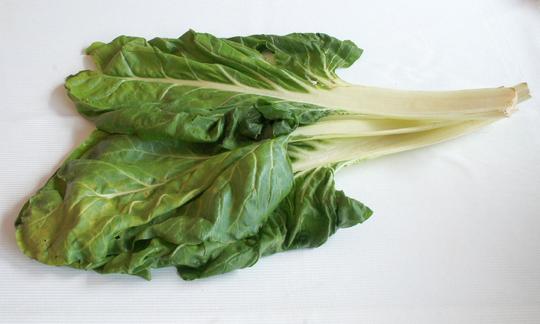

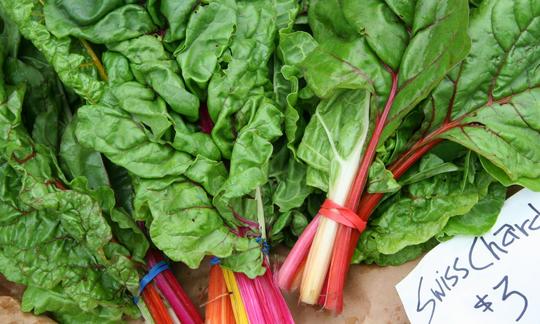

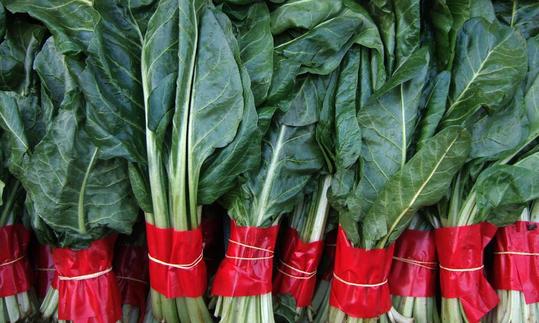

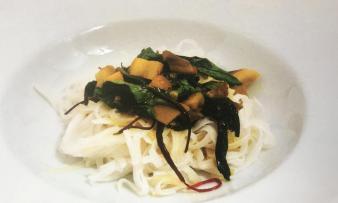

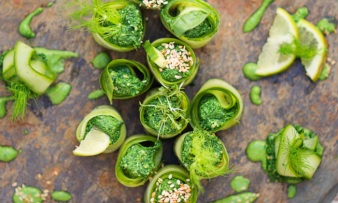





Comments